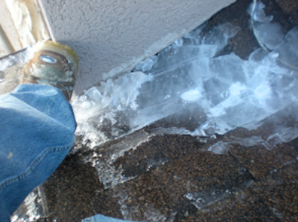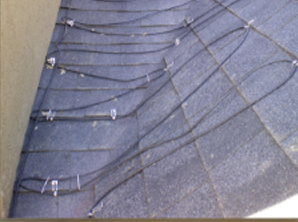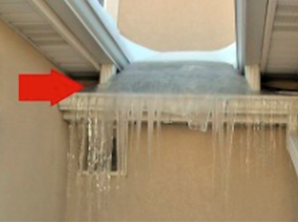Ice damming occurs when the temperatures stay below 32 degrees, which happens a lot in Utah, and snow is present on the roof. Heat comes up from the house through the roof, and melts the snow. The melt-water then runs down until it hits to the eave area where the warm air stops coming through and the water re-freezes. As this melt, run-off, re-freeze cycle continues, a dam of ice begins to back up the roof. The water continues to flow and back-up and will start come through the roof at joints in the shingles and underlayment. Even a properly installed roof can leak from ice damming. Geographical location, architecture, and the direction the home faces will also influence whether a home is likely to have ice damming problems. Complicated roof lines (areas in the roof valley that don’t get sun), and homes in areas like Park City, Immigration Canyon, Suncrest, and Mountain Green are common candidates for ice damming. Strategically placed heat tape in the gutters and downspouts will keep ice dams from forming on the roofs in lower elevations as well as most homes along the valley benches.
At higher elevations heat tape is placed in the gutters, downspouts, and additionally it’s woven on the eaves and in the roof valleys as well. Extreme elevations or areas of architecture that are susceptible to major ice dams will need heat tape in gutters and down spouts, then aluminum alloy thermal panels can be installed on the roof eaves to alleviate major ice dams. Once the ice dam has formed it has to be eliminated before it will stop causing the roof to leak, the heat tape then can be installed but usually has to be re-adjusted after all the snow and ice is completely melted out of the gutters and downspouts and off the eaves. Ice damming can also cause considerable damage to your home’s exterior as well.







